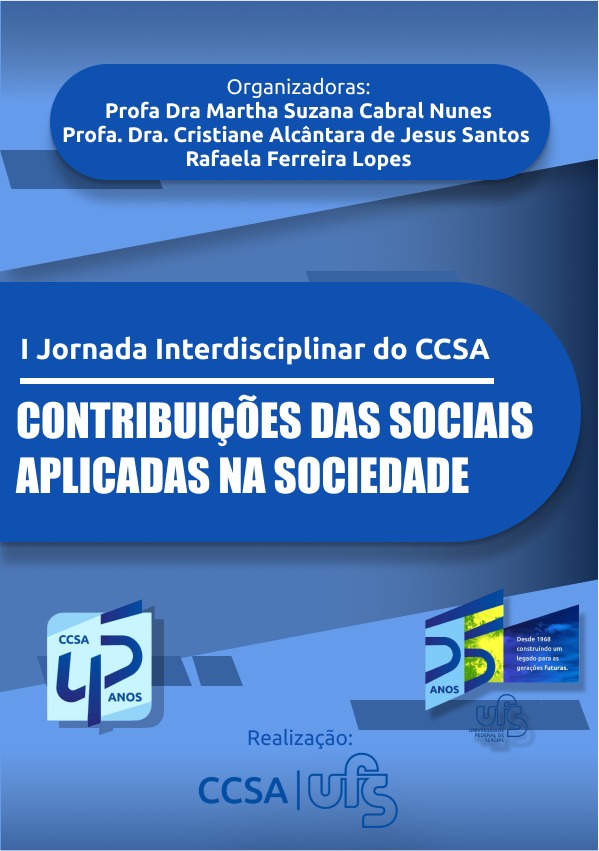Intersex historical perspective for a decolonial vision
DOI:
https://doi.org/10.33467/conci.v6i.20132Keywords:
Intersex, decoloniality, pathologization, human bodyAbstract
This article deals with the different ways that society deals with the intersex body from a decolonial perspective. Passing through the mythological vision going to the indigenous vision until today, observing the treatment of the Catholic Church and the clergy and how that and the European colonization causes the vision of this body to be still distorted. Aiming to demonstrate that colonization helped with the pathologizing view that today has of intersex bodies, as if the intersex person suffered from some illness. The study was carried out by tracing a timeline with the researched bibliography, from anthropologists to doctors, to understand how society dealt with or objectified intersex bodies over the years, with a Eurocentric view. When comparing the treatment of intersex people in indigenous communities with the way the Jesuits treated them today, we perceive remnants of this Catholic Eurocentric memory, however removing the patriarchal and religious issue, but continuing to treat it as a disease and not as human beings that they are. The stigma was placed by the binarism created in the bible that God created man and woman, so it was inconceivable to have another body that did not correspond to one of these.
Downloads
References
BUTLER, J. Problemas de gênero: feminismo e subversão da identidade. Tradução de Renato Aguiar. Rio de janeiro: Civilização Brasileira, 2003.
CFM. Resolução de número 1664 de 2003.
CNJ. Ato Normativo de número 122 de 2021.
FERNANDES, E. R.; ARASI, B. M. Gay Indians In Brazil: Untold Stories os the Colonization os Indigenous Sexualities. Germany: Spring International Publishing, 2017.
FERNANDES, E. R.; ARASI, B. M. Why It’s Important to Look at Gay Natives’ History. Departamento de Ciências Sociais, Universidade Federal de Rondônia, Porto Velho, Brasil, 2009.
FOUCAULT, M. Herculine Barbin: o diário de um hermafrodita. Prefácio de Michel Foucault, novela de Oscar Panizza, trad. Irley Franco. Rio de Janeiro: Francisco Alves, 1982.
FOUCAULT, M. Os anormais. Curso no Collège de France (1974-1975). Trad. Eduardo Brandão. São Paulo: Martins Fontes, 2001.
FREITAS, D. C. A.; SANTOS, T. E. C. Corpos Trans e Intersexo: existência transgressão. In: CIRINEU, C. T.; ASSAD, F. B. (orgs.). Corpo em Foco: proposições contemporâneas. 1. ed. Chile: Claretiano, 2022
FREUD, S. Psicologia de grupo e análise do ego. Rio de Janeiro: Imago, 1976
IDH, Corte. Cuadernillo de Jurisprudencia de la Corte Interamericana de Derechos Humanos nº 14: Igualdad y No Discriminación, pp. 55-56. San José, Costa Rica: Corte IDH, 2019, tradução nossa.
MACHADO, P. S. O sexo dos anjos: representações e práticas em torno do gerenciamento sociomédico e cotidiano da intersexualidade. 2008. 266f. Tese (Doutorado em Antropologia Social) – Universidade Federal do Rio Grande do Sul, Porto Alegre, RS, 2008.
MAINARDES, J. Abordagem do Ciclo de Políticas: Uma contribuição para a Análise de Políticas Educacionais. Revista Educação e Sociedade, v. 27, n.94. Campinas, 2006
MULLER, P.; SUREL, Y. A Análise das Políticas Públicas. Pelotas: EDUCAT, 2002
ORGANIZAÇÃO MUNDIAL DE SAÚDE. Saúde sexual, direitos humanos e a lei. Instituto Federal do Rio Grande do Sul, Universidade Federal do Paraná, coordenadores do projeto: Daniel Canavese de Oliveira e Maurício Polidoro – Porto Alegre: UFRGS, 2020.
RIBEIRO, S. D. Reflexões sobre mitos no manuscrito autobiográfico de Herculine Barbin. Nuntius Antiquus, [S. l.], v. 6, p. 97–108, 2010. DOI: 10.17851/1983-3636.6.97-108. Disponível em: https://periodicos.ufmg.br/index.php/nuntius_antiquus/article/view/17250. Acesso em: 25 jan. 2023.
SAFATLE, V. O que é uma normatividade vital? Saúde e doença a partir de Georges Canguilhem. Revista Scientiæ Studia, São Paulo, v. 9, n. 1, p. 11-27, 2011. Disponível em: https://www.scielo.br/j/ss/a/VfqSSxvQ7WBQyrKKbJwjpWx/?lang=pt. Acesso em: 26 nov.2022
SANTOS, Thaís Emília dos. “JACOB(Y) ‘entre os sexos’ e cardiopatias, o que o fez anjo?”. São Paulo: Scortecci Editora, jan. 2020.
VAINFAS, R. HERMAFRODITAS NOS SÉCULOS XVI E XVII: Intesexualidade impossível. Revista Espacialidades, [S. l.], v. 17, n. 1, p. 50–67, 2021. DOI: 10.21680/1984-817X.2021v17n1ID21776. Disponível em: https://periodicos.ufrn.br/espacialidades/article/view/21776. Acesso em: 16 dez. 2022
VILLELA, J. B. Direitos da personalidade negativos: por que não? TABULÆ: Revista da Faculdade de Direito da UFJF, Juiz de Fora, v. 21, n. 1, p. 9-12, 2004.
VILLELA, J. B. O novo código civil brasileiro e o direito à recusa de tratamento médico. In: CONGRESSO INTERNAZIONALE “IL NUOVO CODICE CIVILE DEL BRASILE E IL SISTEMA GIURIDICO LATINOAMERICANO”, 16., 2003, Roma. Anais [...] Roma: [s.n.], 2003. p. 55-64.
YORK, S. W. TIA, VOCÊ É HOMEM? Trans da/na educação: Des (a) fiando e ocupando os" cistemas" de Pós-Graduação. 2020. 187f. Dissertação (Mestrado em Educação) - Faculdade de Educação da Universidade do Estado do Rio de Janeiro, UERJ, Rio de Janeiro, 2020.
Published
How to Cite
Issue
Section
License
Copyright (c) 2024 Mônica Porto Cardoso, Adriana Lohanna

This work is licensed under a Creative Commons Attribution 4.0 International License.
ConCI adopts the CC BY 4.0 License  , where licensees have the right to copy, distribute, display and perform the work and make derivative works from it, provided that due credit is given to the author or licensor.
, where licensees have the right to copy, distribute, display and perform the work and make derivative works from it, provided that due credit is given to the author or licensor.
ConCI considers that the author holds the copyright on his/her production, but the author must agree to grant the journal the right to the first publication. In addition, the author must agree that:
• in any publications in institutional repositories, book chapters or other productions resulting from works published in ConCI, due credit must be given to the initial publication.
• are authorized to publish and distribute their work online (eg, in institutional repositories or on their personal page) at any time before or during the editorial process, as this can generate productive changes as well as increase the impact and citation of the work published by ConCI.














 Licenciada por
Licenciada por 